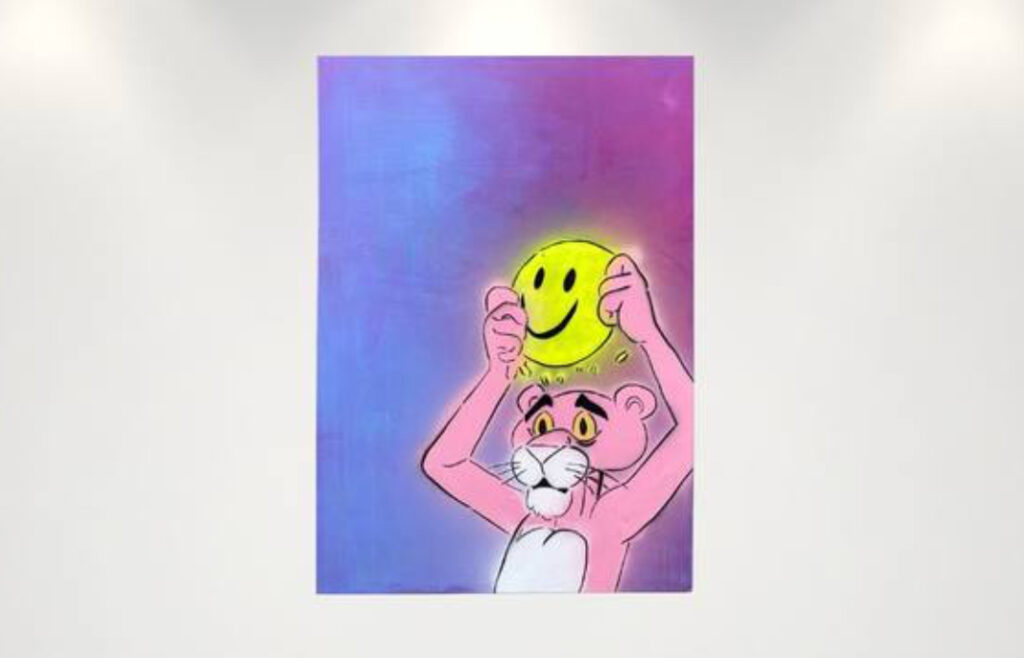
In a world increasingly dominated by uncertainty, where political, social, and environmental anxieties have become part of the daily fabric of life, the act of creating hope is itself a form of resistance. In his latest work titled HOPE, German artist Maximilian Sperber confronts the emotional and philosophical weight of this idea. With a title as universally resonant as it is abstract, HOPE demands not only attention but contemplation. What does hope look like? What does it mean to carry it, to lose it, or to construct it again from ruin?
Sperber, a contemporary artist known for his emotionally charged and often socially responsive installations, paintings, and mixed media works, uses HOPE to speak directly to the tension between despair and persistence — a theme that feels particularly relevant within both the European and global context. Emerging from Germany, a country with a deep historical relationship to recovery, trauma, and transformation, Sperber’s work is rooted in a cultural tradition that knows the power and fragility of hope all too well.
The Weight of the Word
The title HOPE carries an immediate emotional charge. It is one of those rare words that is both deeply personal and endlessly political. To hope is to believe in change, to resist finality, to trust that better is possible — even in the absence of proof.
Sperber, ever aware of semiotics and the power of text in visual art, doesn’t hide from the challenge of working with such a loaded term. Instead, he leans into its simplicity. Whether rendered in large-scale text, abstract forms, or symbolic motifs (depending on the medium), the work likely uses its directness as both an entry point and a challenge. There is no irony here. There is no postmodern distancing. HOPE is a genuine invitation.
In many ways, this approach is countercultural in a time where cynicism often passes for intelligence and detachment for maturity. Sperber’s embrace of the word in all its sincerity makes the artwork brave. It risks sentimentality. And in doing so, it succeeds in disarming the viewer — creating space for reflection and emotional honesty.
Material and Message
Though the exact medium and format of HOPE are not detailed here, Sperber’s past work often involves layered textures, symbolic color palettes, and dynamic compositions that blend traditional and experimental materials. If HOPE follows suit, it’s likely to incorporate a tactile quality — perhaps through canvas layered with newspaper clippings, worn fabrics, or organic materials that suggest both decay and regeneration.
In visual terms, Sperber may choose to contrast light and dark, both literally and metaphorically. Light, as an emblem of hope, could be represented through the use of gold leaf, reflective surfaces, or exposed spaces within the composition. Darkness might appear in charcoal, black acrylic, or burnt edges — elements that gesture toward damage or erasure.
This tension between damage and beauty, between ruin and light, is key to the emotional impression of the work. In creating something that feels simultaneously broken and luminous, Sperber mirrors the psychological landscape of anyone who has hoped through hardship. Hope, after all, is not born in ease — it’s carved out of crisis.
Context: A German Lens on Global Emotion
To make a piece of art titled HOPE in Germany is no small gesture. Germany’s recent history — from the fall of the Berlin Wall to its role in the European Union’s migrant crisis, to its efforts around climate responsibility and social progress — is shaped by the act of rebuilding. The country’s identity is deeply tied to transformation, to reckoning, to rising from failure with a more honest blueprint for the future.
Sperber’s work does not isolate Germany as a singular subject, but the cultural context of the country inevitably seeps into the tone of the piece. The seriousness with which German art often engages history is present here, but rather than focus on past trauma, Sperber aims forward. HOPE is not nostalgic. It is a future-facing work, rooted in emotional truth rather than historical burden.
Yet, in the backdrop of political uncertainty, climate emergencies, and rising populism across Europe, hope becomes a radical act. To center hope in a time of fear is a refusal to surrender. In this way, the artwork becomes not just a commentary, but a call to action. A demand that we refuse numbness. A reminder that belief in progress — even small, local, human progress — is still possible.
Emotional Accessibility in Contemporary Art
One of Sperber’s most compelling traits as an artist is his emotional accessibility. His work doesn’t alienate; it invites. In a contemporary art world that can often lean toward intellectual elitism, HOPE offers something that everyone can relate to, whether consciously or subconsciously.
This does not mean the work lacks depth or complexity. On the contrary, the power of HOPE lies in its ability to hold multiple truths at once: that the world is broken and worth saving; that people are flawed and still beautiful; that life is hard and still worth living. Sperber makes space for all of it — the mess and the meaning.
For young viewers, HOPE might feel like affirmation. For older audiences, it may feel like a mirror. For those living through conflict, displacement, or personal grief, it could land like a lifeline. Its meaning will vary — and that’s its strength.
A Work Meant to Be Lived With
What sets HOPE apart is its insistence on being not just seen, but felt — and perhaps even carried. It’s the kind of work that lingers after viewing, not because of shock or spectacle, but because of resonance. It reminds us that art doesn’t always have to disrupt with noise. Sometimes it disrupts with clarity. With warmth. With the radical act of naming something soft.
Maximilian Sperber doesn’t offer easy answers or utopian illusions. He doesn’t paint a perfect world. Instead, he offers a container — visual, emotional, and symbolic — for what we all hold quietly inside us: the desire for things to be better. And the courage to keep that desire alive, no matter what.
Final Thoughts
In HOPE, Maximilian Sperber delivers more than an artwork. He delivers a message. One that transcends nationality, language, or politics. It’s a message rooted in emotional truth, artistic sensitivity, and cultural awareness.
As we move through a time defined by tension — technological, emotional, environmental — this kind of art feels essential. Not because it solves the world’s problems, but because it gives us permission to care again. To believe again. To keep going.
And maybe, in the quiet corners of galleries, homes, and public spaces, HOPE will do what its title promises: plant a seed that grows.
No comments yet.








